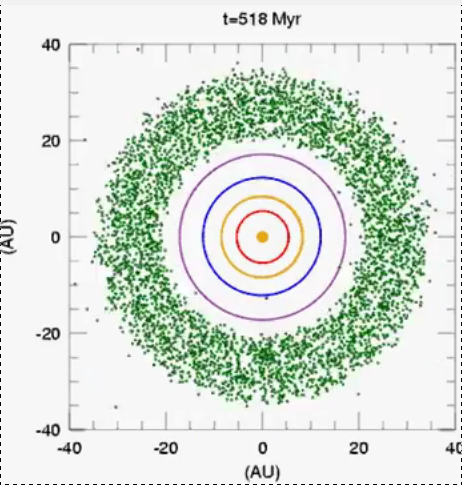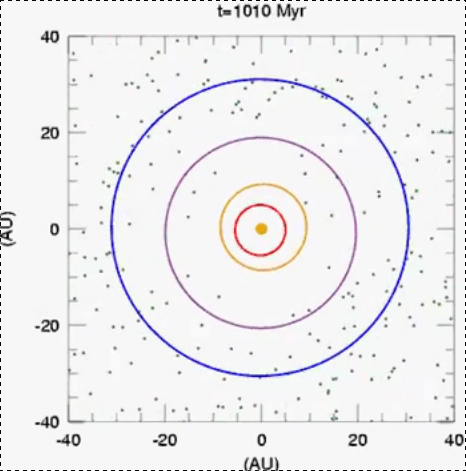This video depicts one variant of the Nice model (pronounced "neese", like the city in France). I'll briefly describe it in case the link ever dies. Here is the initial configuration:

The four coloured circles indicate the orbits of the four Solar System (SS) gas giants, red for Jupiter, yellow for Saturn, blue for Neptune, purple for Uranus. The green dots represent a hypothesized disk of planetesimals. Initially, Neptune has an orbit smaller than Uranus. In the Nice model, the outer gas giants occasionally scatter small objects inward, and by conservation of $E$ and $L$, move outward. The inward-scattered objects then often scatter off of Jupiter and are ejected (or nearly so) from the SS, so Jupiter slowly migrates inward. Eventually Jupiter and Saturn cross their 2:1 mean-motion resonance, which pushes Saturn out into encounters with Uranus and Neptune, scattering the two outer giants into the planetesimals. The result of the system re-stabilizing is an explosive disruption of the planetesimals, and Neptune "switching places" with Uranus, giving this configuration at later times:

The whole model seems to hang together rather nicely (ahem, no pun intended), which is presumably why it's been fairly successful. My question is what prevents one of the two ice giants (Uranus, Neptune) from being ejected in that big shake-up. With their orbits swapping places, my intuition is nagging me that one of the orbits (probably Neptune's) shouldn't survive the process. Is there something that is forcing the two planets back to a stable configuration? Or is this just one lucky scenario, where more generically there's a substantial probability that one of the giants is ejected?
